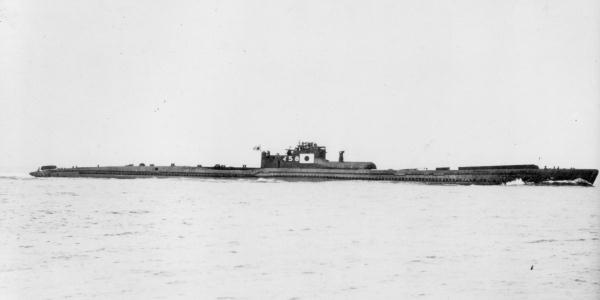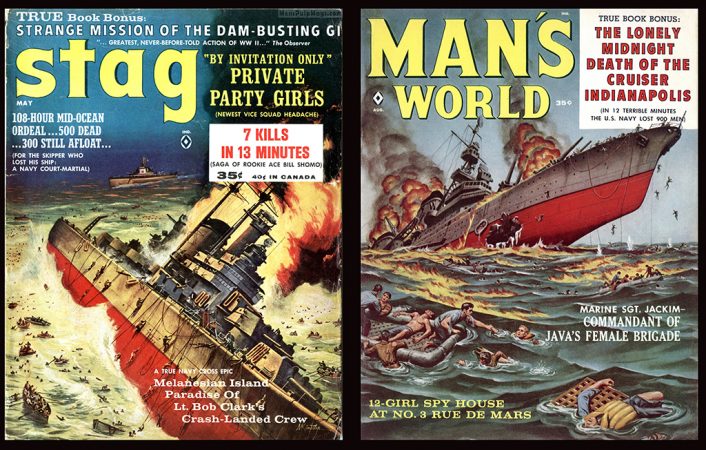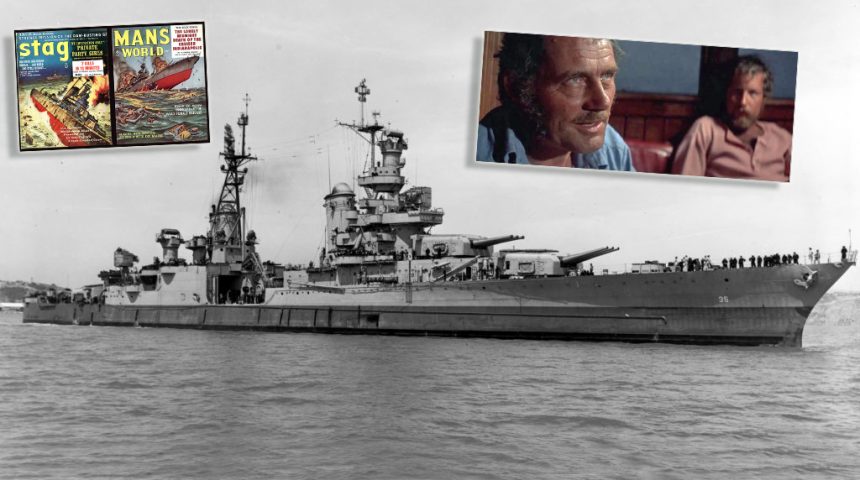Tragic and Terrifying, The Story May Have Vanished in Obscurity Without “Jaws”.
It has become one of the most memorable monologues in cinema history: the fictional character “Quint” recounting his survival ordeal in the real WWII sinking of the USS Indianapolis in the “shark-infested” waters of the Philippine Sea. But the real story of how most of the crew of the USS Indianapolis died tragically is very different from Quint’s haunting oration.
“Jaws” author Peter Benchley and film director Steven Spielberg created what is one of the most perfect movie blockbusters in film history with “Jaws”. To this day, “Jaws” is studied in graduate-level filmmaking classes for many of its dramatic and technical elements, from editing to script to camera movement. But the film is fiction spun from fact in all respects, from its inaccurate depictions of shark behavior to its alteration of the actual events in the USS Indianapolis sinking. Perhaps the mastery of “Jaws” is that, it preys on our latent, primordial fears. Like our own imaginations when floating on the surface of a dark ocean, the story takes historical and shark fact and runs wild with it into an exaggerated and dramatized set of terrifying fears manifested on screen. The series of shark attacks from “Jaws” are even based on an actual set of attacks between Atlantic City and New York City along the Jersey Shore in the U.S. in 1916 that claimed four lives and injured one person.
In a haunting story, reminiscent of the 1916 attacks and Benchley’s “Jaws”, the BBC World News and other media outlets reported yesterday that Julie Holowach, 63, a recently retired fashion executive from New York, was killed by a great white shark off the coast of Maine on Monday, July 27, 2020. The story came as “Sharks have been sighted in various places off the north-east US coast in recent weeks, particularly around Long Island in New York, the AFP news agency reports.” Other reports indicated that great white sharks have been tracked in the area in recent days, compelling some localities to post warnings or restrict swimmers from some beaches.
But current and lingering shark hysteria aside, the facts of the USS Indianapolis sinking 75 years ago today are more compelling than any fictional account.
The USS Indianapolis was not actually delivering “the Hiroshima bomb” when it was sunk by the Japanese B3 type submarine I-58 just after midnight on July 30, 1945, between Guam and Leyte in the Philippines. It was transporting the highly-enriched uranium-235 for use in the nuclear weapon. The bomb itself was flown to the island of Tinian in a B-29. But without the USS Indianapolis’ deadly radioactive cargo, the bomb was useless. The ship also did send a distress signal, but, depending on the historical account you read, the signal may have been received by a “drunken radioman” and never taken seriously. Whatever the case with the ill-fated distress signal, the Indianapolis did sink beneath the surface in only 12 minutes, giving the crew barely enough time to get overboard in life jackets.
 The Japanese type B3 submarine I-58 that sunk the USS Indianapolis 75 years ago today. (Photo: via Yokosuka Naval Arsenal)
The Japanese type B3 submarine I-58 that sunk the USS Indianapolis 75 years ago today. (Photo: via Yokosuka Naval Arsenal)According to journalist Rupert Millar in a 2017 article about the sinking of the Indianapolis, “Of the 1,196-man crew, 880 escaped the sinking ship into the water and then endured four hellish days and nights of dehydration, hypothermia, hypernatremia (salt poisoning) and desquamation (skin loss). Men died of exhaustion, committed suicide and even killed each other as they suffered from delirium and hallucinations and of course, there were the sharks that feasted on the living and the dead.”
But there were numerous acts of humanity and heroism among the desperate survivors floating for days in the Pacific.
Authors Lynn Vincent and Sara Vladic have written what is most likely the definitive account of the USS Indianapolis sinking in “Indianapolis: The True Story of the Worst Sea Disaster in U.S. Naval History and the Fifty-Year Fight to Exonerate an Innocent Man” (Simon & Schuster, 2018). In their excellent book, Vincent and Vladic chronicle a 50-year battle for the truth in the court martial of Indianapolis Captain Charles McVay III. Even the Japanese Captain of the submarine who sunk the Indianapolis, Mochitsura Hashimoto, joins the legal fight to clear Capt. McVay III’s name.
Authors Vincent and Vladic recount numerous factual stories of the Indianapolis survivors joining together in prayer for hours as they bobbed on the surface of the Pacific and drifted for miles from where the ship sank. They tell the stories of men trying desperately to save wounded shipmates, only to comfort them as they die from wounds sustained in the sinking and from exposure in the harsh open-ocean environment.
Before the movie “Jaws” and well before Lynn Vincent and Sara Vladic’s journalistic accounting of the sinking, and the aftermath, the story of the Indianapolis remained largely in obscurity. Curator of 40’s, 50’s and 1960’s pulp men’s adventure magazines and author Bob Deis (“Like” his page, “Men’s Adventure Magazines & Books” on Facebook) has done an excellent job of featuring some of the artwork used on the cover of the sensational men’s magazines that ran dramatic and embellished stories about the Indianapolis sinking.
 Bob Deis of Men’s Adventure Magazines and Books on Facebook shared these men’s sweet magazine covers of the sinking of the USS Indianapolis from the pre-Peter Benchley, Jaws era before the story was not widely known. (Photo: via Bob Deis/Men’s Adventure Magazines and Books Facebook group)
Bob Deis of Men’s Adventure Magazines and Books on Facebook shared these men’s sweet magazine covers of the sinking of the USS Indianapolis from the pre-Peter Benchley, Jaws era before the story was not widely known. (Photo: via Bob Deis/Men’s Adventure Magazines and Books Facebook group)But despite the excellent journalistic accounting of Lynn Vincent and Sara Vladic in their book, the numerous articles that have been written about the USS Indianapolis and even the recent discovery of her wreck by Microsoft co-founder Paul Allen during an expedition by his research vessel, R/V Petrel on August 19, 2017, the most well-known and sensational account of the sinking of the USS Indianapolis remains, to this day, Quint’s fictional monologue in the movie “Jaws”. In the case of this remarkable story, it pays to dig a little deeper beyond the sensationalized and fictional accounting spun from fact into “Jaws” fiction to understand the true valor and courage of the crew of the USS Indianapolis.









